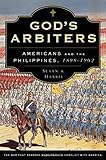Support H-Net | Buy Books Here | Help Support the NBN and NBN en Español on Patreon | Visit New Books Network en Español!
- African Studies
- African American Studies
- American Politics
- American Studies
- American South
- American West
- Asian American Studies
- Australian and New Zealand Studies
- British Studies
- Canadian Studies
- Caribbean Studies
- Central Asian Studies
- Chinese Studies
- East Asian Studies
- Eastern European Studies
- European Politics
- French Studies
- German Studies
- Iberian Studies
- India Studies
- Indian Ocean World
- Iranian Studies
- Irish Studies
- Israel Studies
- Italian Studies
- Japanese Studies
- Korean Studies
- Latino Studies
- Latin American Studies
- Mexican Studies
- Middle Eastern Studies
- Native American Studies
- Pacific Studies
- Polish Studies
- Russian and Eurasian Studies
- Southeast Asian Studies
- South Asian Studies
- Turkish Studies
- Ukrainian Studies
- Western European Studies
- World Affairs
- Animal Studies
- Anthropology
- Archaeology
- Business, Management, and Marketing
- Media
- Critical Theory
- Disability Studies
- Drugs, Addiction and Recovery
- Education
- Economics
- Finance
- Geography
- Gender Studies
- Genocide Studies
- Higher Education
- Human Rights
- Journalism
- Language
- Law
- LGBTQ+ Studies
- National Security
- Philanthropy
- Philosophy
- Policing, Incarceration, and Reform
- Political Science
- Politics & Polemics
- Public Policy
- Sex, Sexuality, and Sex Work
- Sociology
- Sound Studies
- Sports
- Urban Studies
- Big Ideas
- Celebration Studies
- Co-Authored
- Cover Story
- Historical Materialism
- History Ex Silo
- Interpretive Political and Social Science
- Invested Investor
- Landscape Architecture
- Late Antiquity
- Mormonism
- NBN Book of the Day
- NBN Seminar
- Postscript: Conversations on Politics and Political Science
- Practical History
- Preparing for Life After Grad School
- Psychology and Climate Change
- Syriac Studies
- The Chair: In The Room at the Fed
- New Books with Miranda Melcher

Sep 30, 2011
Southeast Asia in World History
Summary
A book called Southeast Asia in World History (Oxford University Press, 2009) might seem on the face of it to be out of place on a blog about South Asia. But as Craig Lockard so convincingly demonstrates, this region was shaped by, and in turn gave much to, the rest of the world. Its links with South Asia, with the ancient empires of India, go back to antiquity; and Indian traders in turn were responsible for ferrying many Southeast Asian spices to the rest of the world; curiosity eventually drew the Arabs and then the Portuguese, to the region, thus bringing the world to a place that already boasted of Indic, Sinitic and Pacific peoples and cultures.
The nation states of modern Southeast Asia, both mainland and maritime, have continued this proud tradition of welcoming people from across the world; not always without conflict, but this is part of a larger process of acceptance and assimilation that translates into being able to partake of foods from across the world on the streets of Penang and Singapore and Jakarta; of a small city state becoming a global hub insofar as connections, virtual and real, are concerned, and of politicians coming from 'minority' ethnic groups and nobody batting an eyelid. Craig's book shows us how this is the result not of some artificially engineered process, but of an autochthonous tradition of pluralism that has endured over the centuries.



































































































